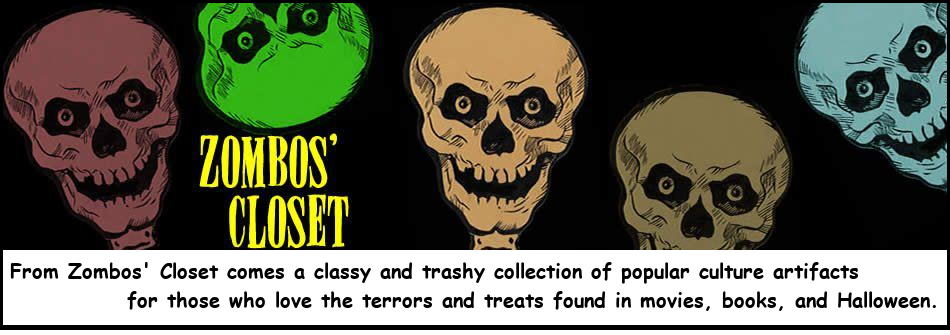 This book review first appeared at The Horror Zine.
This book review first appeared at The Horror Zine.
Halfway through The Bed Makers by Chad Lutzke and John Boden I realize it is not a horror novel. Not in a practical sense. There are no other-worldly monsters, no stalkers slicing and dicing, and everything from the characters to the small Mayberry-like town where Genie and Calvin wind up in, well, there is no hint of the supernatural at all; no under the bed nightmares, no hints of ghosts prowling the graveyard, no vampires, zombies or cryptids or apocalyptic wastelands. But there are some bad people; some confused; and some just looking to do the right thing.
It all seems so normal. The people you will meet are the friendly and unfriendly sheriff and his deputy, Pastor Paul, who needs gravediggers–oh, and there is his son who sleeps in a coffin. That is a bit weird. There are some twisted-up people too, acting in ways stunting their humanity or making others fearful or making a few people dead.
Not the haunting dead, mind you, but the dead that haunt the lives of the living; and that is where the title of this novel makes a little more sense. We all make our own beds, so to speak, which is at the core of this structurally simple character study that is like watching one of those early live and intense television dramas from the 1950s: slices of life cut all sorts of ways–with commercial breaks–until somebody finally realizes they need a decision that works better than the ones previously made before time runs out. All played in a few simple but important locations.
Of course, no commercial breaks are needed here. The decision that gets Genie and Calvin, two down on their luck homeless ex-army buddies, long on years, to leave 1979 Chicago and hop on a train heading west, to find something better, also gets them into trouble. Not their fault, either. The ride is uneventful except for a pending storm and some boys up to no good. They meet those boys hiding in the second train car they hop into. Reluctant at first, the boys act friendly until they are not. What takes place in the train car follows Genie and Calvin to a television sitcom-perfect town, where they decide to settle down. Now if only the deputy would leave them alone it would be a quiet spot for them. But that deputy has some hidden agenda and a lot of room for personal growth.
Pastor Paul’s son, who should be away at school, who I already said sleeps in a coffin, prowls the graveyard messing up fresh dug graves, making Genie and Calvin’s new job a real hassle. On top of that there is a person they thought dead now back to blackmail them. Or kill them.
The Bed Makers pins its dialog to the center of the world these ex-army buddies inhabit, trying to eke out a living, avoid being hassled, and wanting to end their days with some comforts. The interest-pull here is how they watch out for each other, deal, together, with all the bad luck that comes their way, and their efforts to solve a murder mystery hiding in plain sight.
Lutzke and Boden keep their style and descriptions in period, perhaps taking a little too long at the start in getting to that small town, but then pick up the pace to provide the growing mystery and danger, leading to the climax. For Genie and Calvin, their lives wind up like riding around a merry-go round and missing the brass ring at every turn in their lives, holding on for dear life and still reaching for that brass ring just out of reach. But now, reaching that small town, the brass ring is almost theirs.
What keeps this story engaging is how they do not take no for an answer. Sure, they accept a little too much, demand too little, but when it comes time to really matter, they will not let go. All they needed was to be left alone, enjoy a decent meal, and make a clean bed for a change. As Genie told the pastor, “We threw our dice back in Chicago, hopped on a train to come west, hoping we’d find something. Luck has landed us here.” Not quite the word he wanted to use, but they finally have a warm bed, a paying job digging graves, and a kitchen with food in the cupboards. There is also the diner they can now afford, one of their few luxuries.
The dialog is measured with a bit ‘oldish’, pegging the generation Genie and Calvin grew up in. For instance, “Damn, that Fred’s a good egg,” meaning someone you could trust, and “peckerhead,” a person you definitely could not, have long whiskers on them but they flesh the tone of the novel.
Eventually you start to wonder how Genie and Calvin wound up homeless and hankering for a new life, and what their backgrounds had to say about them. A few allusions to it are made but you do get a sense, based on their placid philosophical take toward their up and down predicaments that the authors really did write those backgrounds to add more depth to these two men.
The Bed Makers is a subtle, less horror-oriented, and dramatically rounded story that offers a satisfying conclusion. It is a drama about life, loss, and the perseverance of Genie and Calvin, who, despite their struggles and the uneven luck that comes their way, keep working through it, especially when others are in need. The authors successfully create a period-appropriate atmosphere and develop their characters’ backgrounds to add depth to a quietly strong story, making it a rewarding read for those who appreciate a more nuanced, character-driven approach to storytelling whose power keeps you from putting it down. I heartily recommend it.



















